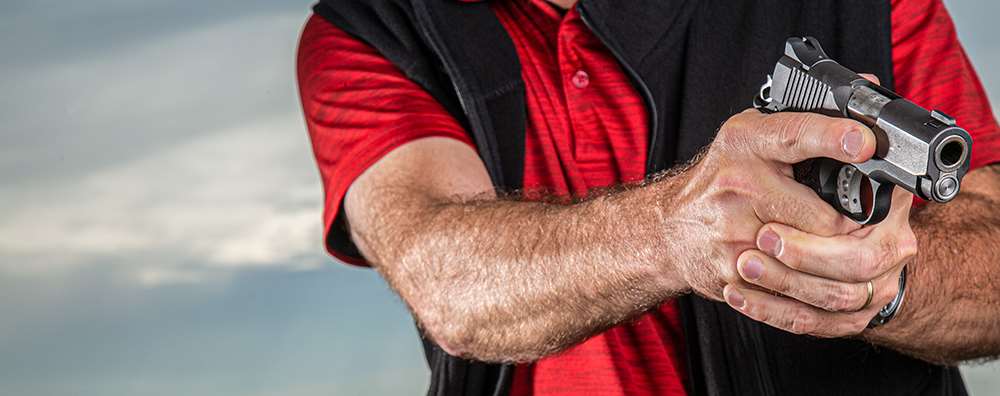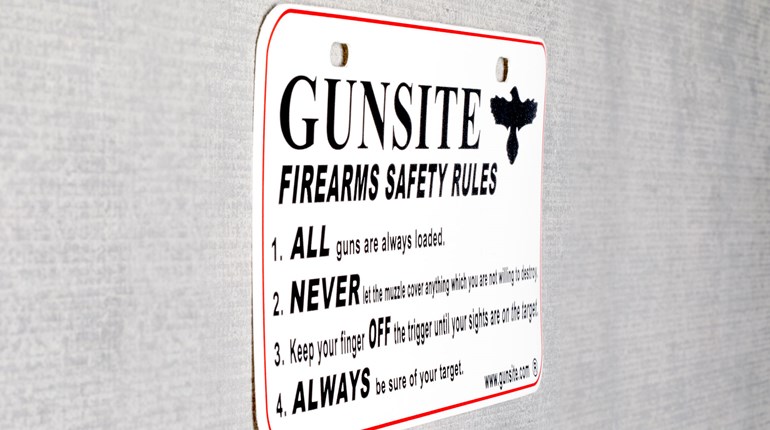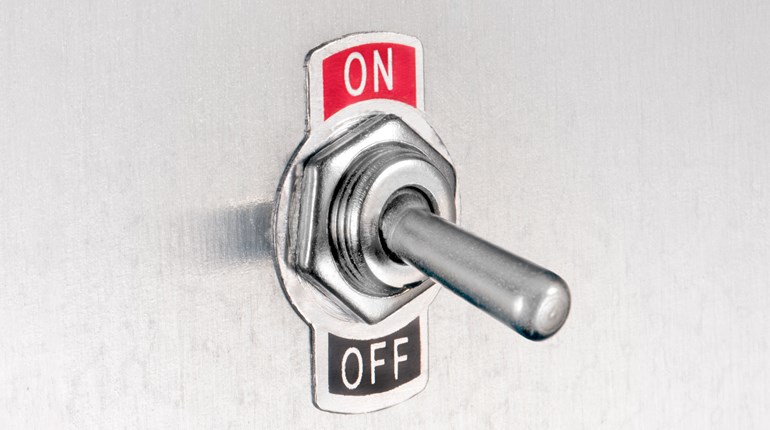
There’s a peculiar mismatch between the number of times one reads in the newspaper that an armed citizen has prevented a mass shooting and the number of times such incidents make it into the public record—and, in turn, into the public’s perception about the role that concealed carriers play in America.
When, last July, a man named Elisjsha Dicken heroically stopped a murderer in a mall in Indiana, the corporate media outlets that reported on it were quick to reassure their readers that such things “never happen” or “rarely happen,” and to insist—even in the face of a story that flatly contradicted the claim—that, whatever might just have happened, “average citizens with handguns” usually have little chance of making a difference. In the course of telling Dicken’s story, the Associated Press bluntly proposed that his intervention represented “a rare occurrence of someone stepping in to try to prevent multiple casualties before police could arrive.” This line was echoed, almost verbatim, by The Washington Post, which called it “one of the rare instances of an armed civilian successfully intervening to end a mass shooting.” Also, CNN submitted that examples of “an armed bystander attacking an active shooter are rare” and Reuters said “it is rare for a bystander to stop an ‘active shooter’ attack in the United States.”
This talking point, of course, comes straight from the anti-gun group Giffords, which has a whole section on its website devoted to the idea that the notion of “a good guy with a gun” is a myth. “Having access to a gun doesn’t better protect people from being injured during a crime compared to other protective actions like calling law enforcement or fleeing the scene,” Giffords’ page insists, before claiming that “four times as many shootings were stopped by unarmed civilians restraining the shooter.”
Before delving into the statistics in this area, it is worth noting that neither of these claims makes much sense. Given that more Americans go out in public unarmed each day than go out in public armed, it is mathematically inevitable that more mass public murderers will be stopped by civilians who are unarmed than by civilians who are armed. But that’s not the important question. The important question is whether it is better to be armed if one finds oneself in such a situation than it is to be unarmed. And the answer to that question is: Yes, obviously.
As for the claim that “having access to a gun doesn’t better protect people from being injured during a crime compared to other protective actions like calling law enforcement or fleeing the scene,” I am at a loss to know quite what that means. There is, of course, nothing wrong with a person choosing to flee a crime scene or to call for help from law enforcement, but it is the height of anti-gun zealotry to suggest that these courses of action are preferable to stopping the murderer if someone can. Nobody in the history of the human race has found themselves in a terrible life-or-death situation and thought, Boy, I wish I didn’t have this gun.
A few years ago, Bill Clinton (D), the former president of the United States, said that he was pleased that nobody who was victimized at the ISIS-inspired shooting at the Pulse nightclub in Orlando, Fla., had been armed, because, if they had been, “it’s likely that more people would have been killed.” What ... really? According to the Miami Herald, which published a minute-by-minute account of the attack, the murderer in that case—a terrorist named Omar Mir Seddique Mateen—walked around the venue untouched for more than three hours while patrons hid wherever they could. Per police, Mateen frequently stopped shooting to walk around and search for more victims, and, at one point, he put down his rifle and cleaned his face in a bathroom. Irrespective of one’s views on what constitutes the ideal set of gun-control laws, it should be self-evident that the existence of even one concealed firearm there would have helped.
Which is all to say that the question that matters here is not: “Is it good to have armed bystanders at crime scenes?” The question is: “Are there benefits to having millions of armed citizens spread out across the United States?” The answer to that one is an unequivocal, “Yes.”

In support of its claim that interventions from Good Samaritans are “rare,” the Associated Press referenced an FBI report from May of 2022, which contended that only two out of 61 such attacks last year ended when “citizens engaged the shooter,” and pointed to a “similar New York Times analysis” that “found that only 22 gunmen in the 433 mass shootings since 2000 were shot by a bystander.” If these claims were true, they would inevitably prompt the same question as before: So what? Statistics from Texas and Florida have shown that lawful concealed carriers—that is, the people who stop mass murders before the cops are able to arrive—are so law-abiding that they are seven times less likely to commit a crime than are police officers. If, last year, those people had stopped two out of 61 mass shootings, the correct response would not be to say “better get rid of them, then,” but to say “thank you” and to work out how we could add significantly to their ranks. An improvement on “two out of 61” is “three out of 61” or “eight out of 61” or “50 out of 61”; it is not zero out of 61. For Americans to examine these acts of heroism and to conclude that they need fewer of them would be a peculiar form of gratitude.
But, as it turns out, the statistics cited by the Associated Press are not, in fact, correct. What Elisjsha Dicken did in Indiana was notable for its remarkable rapidity and skill—impressively, Dicken took down the murderer within 15 seconds, at a range of 120 feet, with a 9 mm pistol—but it was certainly not that unusual. As John Lott Jr. has noted—using publicly available reports from newspapers and media outlets—as this was being written, thus far in 2022, bystanders stopped at least seven mass murderers. (Lott deliberately separates mass murders from other crimes that have been prevented by concealed carriers.)
In addition to the incident in Indiana, there was a case in West Palm Beach, Fla., in which a man threatening to “shoot the crowd up” was shot by a concealed carrier; a case in Sunrise, Ariz., in which a man who had already murdered two people at an Independence Day party was killed when his neighbor, a concealed carrier, intervened; a case in Charleston, W.Va., in which a man who started firing into the crowd at a graduation party was killed by a woman with a pistol (“instead of running from the threat,” the police chief said, “she engaged with the threat and saved several lives last night”); a case in South Fulton, Ga., in which a teenager opened fire at multiple people in a park and was taken down by two concealed carriers; a case in Phenix City, Ala., in which two men opened fire at customers at a truck shop but were both struck when one of those customers fired back; and a case in Portland, Ore., in which a man opened fire at a demonstration, killing one and injuring many, before a concealed carrier in the crowd fired back.
How many of these incidents will be counted in the oft-cited statistics? Not enough, I’d venture. Last year, the FBI counted just two interventions from bystanders. Per Lott’s data, that number was actually at least 13. In 2020, the number was at least 10. To conduct even the most-basic extrapolation from these numbers reveals that The New York Times’ claim that “only 22 gunmen” since 2000 have been shot by armed citizens must be badly wrong. Certainly, it is difficult to calculate precisely what would have happened in a halted mass murder event, given that, by definition, such shootings were summarily stopped. But it seems extremely problematic that so many well-documented interventions—and, by extension, so many saved lives—seem to be invisible within the data most-commonly cited by the press. Evidently, the criteria by which the FBI and The New York Times have selected for “thwarted mass shooting” is deeply flawed. That their results might differ a little from the stories in the newspapers—or the police reports from which they draw—is to be expected. That they are off by a factor of five or six is extraordinary.
In no other circumstance would the difference between two and thirteen be ignored by the press. Nor should it be here. A statistical analysis conducted by Davi Barker in 2015 revealed that mass killings stopped by police generate an average of 14.29 deaths, whereas mass killings that are stopped by armed bystanders generate an average of 2.33 deaths. Each case is different, of course, but if we take these numbers as our benchmark, and assume that all murderers will eventually be stopped by the police, the difference between acknowledging two citizen interventions and acknowledging 13 citizen interventions could be the difference between acknowledging that 23 lives were saved and acknowledging that 155 lives were saved.
If it were the steadfast policy of the American media to always err on the safe side, one could just about comprehend this tendency. But, of course, it is not the steadfast policy of the American media always to err on the safe side—especially where firearms are concerned. On the contrary: Over the last decade, the American media has adopted the bad habit of overstating the number of mass shootings in the United States on a scale that is difficult to believe. Writing in The New York Times in 2015, Mark Follman noted that The Washington Post was claiming that there had been 355 mass shootings in 2015 alone, when, in reality, there had been “73 such attacks since 1982.” That discrepancy, Follman noted, was attributable to one man on the Internet, who had “decided, all by [himself], to change the United States’ definition of mass shooting”—this is to say, he meant to lie about it for political effect.
Since that “one man” started his crusade, most of America’s corporate media outlets have elected to uncritically repeat his lies, while underplaying the number of instances in which a bystander successfully intervenes. In so doing, the press has managed to burn the candle at both ends: overstating the number of mass murderers, understating the number of interventions and thereby making the concealed carrying of firearms seem a great deal less rational than it is. Which, of course, is the point: The purpose of repeating gun-control activists’ lines about the uselessness of firearms in crises is to try to prevent readers from thinking, That person benefitted from carrying, perhaps I’ll carry, too. Or, to put it another way: The purpose is to try to prevent Americans from concluding that the “good guy with a gun” is not a myth after all.
Which, as the data shows, he—or, in an increasing number of cases, she—is not. He’s the guy from Fort Smith, Ark., who stopped an intruder who was shooting people in an apartment building. He’s the guy in Weslaco, Texas, who held a man who had walked into a Walmart with an AK-47 at gunpoint until police arrived. He’s the guy in Colonial Heights, Tenn., who stopped a massacre at a dentist’s office. And he’s the guy in Chicago, Ill., who left the Uber he was driving to prevent a mass murder on a Logan Square sidewalk.
The least we can do for the good citizen with a gun is to acknowledge he or she exists.


































